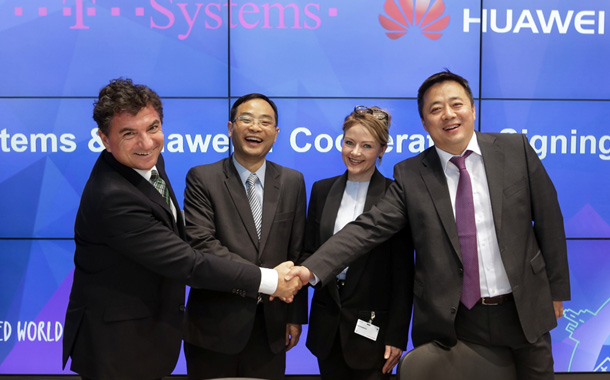In collaboration with Huawei, Deutsche Telekom (DT) announced Europe’s first 5G connection based on the latest 3GPP standard. On DT’s commercial network in central Berlin, the network has gone live with a 5G connection at over two gigabits per second and a low latency of three milliseconds over a 3.7 gigahertz spectrum link. Powered by Huawei user equipment using 3GPP specifications for 5G New Radio (NR), the deployment on commercial sites is the first in Europe and marks an important advancement in the global development of 5G.
“5G new radio will be critical for meeting our customers’ ever-increasing connectivity requirements that are steadily growing with more and more network connections,” said Claudia Nemat, Deutsche Telekom Board member for Technology and Innovation. “Our achievement demonstrates the feasibility of our plans to deliver a superior, new customer experience.”
Taihua Deng, President Wireless Network, Huawei, said, “As long time partners, both Deutsche Telekom Group and Huawei have joined hands to successfully test 5G NR equipment in field environments based on the latest 3GPP R15 standards. These achievements highlight the capabilities of the 5G NR equipment to meet operators’ requirements for addressing new business opportunities for end users. Huawei is confident that the partnership with Deutsche Telekom can fully prepare the commercial launch of 5GNR services in Europe by 2020 thanks to 3GPP standardization efforts.”
The implementation in a live real-world setting in central Berlin using Huawei equipment and software is based on pre-standard 5G that closely tracks the 3GPP global standard for so-called ‘Non-Standalone New Radio’. With the Non-Standalone 5G NR mode for enhanced Mobile Broadband (eMBB) use-case, it is meant that the connection is anchored in LTE while 5G NR carriers are used to boost data-rates and reduce latency. Therefore, 5G new radio will be deployed with the evolution of 4G LTE as the baseline for wide-area broadband coverage. The specifications enabling that system will be complete by December 2017 as part of the first drop of 3GPP Release 15.
5G New Radio has characteristics that make it ideal to meet the sub 6 GHz mid-band needs for 5G applications that will require mobility support, wide-area coverage, as well as multi-gigabit throughput speeds and millisecond low latency.
“With this real-world achievement, Deutsche Telekom is making its first important step towards a 5G network launch,” said Bruno Jacobfeuerborn, CTO, Deutsche Telekom. “When the standard is defined, we will trial it in 2018 to prepare the ground for a wider deployment of commercial sites and the offering of devices for the mass market as they become available.”
The DT and Huawei joint implementation was conducted as part of Deutsche Telekom’s 5G:haus innovation partnership to advance 5G development to make the standard a global success. Both companies look forward to demonstrating this technical breakthrough and the innovative applications it enables during the 5G Experience Day in Berlin on October 12, 2017.


